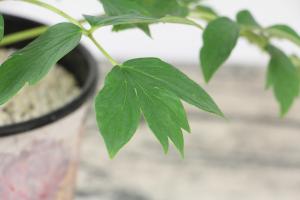Can I Plant a Tree in the Forest?
Forests are vital natural resources that provide clean air, water, and shelter for wildlife. They also play a crucial role in reducing the effects of climate change. However, deforestation is a growing concern, and planting new trees can help mitigate its negative impact. If you're wondering whether you can plant a tree in the forest, the answer is not simple.
The Importance of Forests
Forests cover about 31% of the earth's land area and provide habitat to over 80% of the world's terrestrial biodiversity. They help maintain the earth's ecological balance by regulating water and air quality, reducing soil erosion and flood risks, and preventing climate change. Forests also provide wood and non-timber products, which support the livelihoods of millions of people worldwide. Therefore, preserving and restoring forests is essential for the health and well-being of humans and ecosystems.
Why Plant Trees in the Forest?
Forests face many threats, such as deforestation, wildfires, pests, and diseases, which reduce their ability to provide ecosystem services. Planting new trees can help restore degraded or destroyed forests, enhance the biodiversity of natural ecosystems, and provide a source of wood and non-timber products. It can also sequester carbon dioxide from the atmosphere, mitigating climate change. Therefore, planting trees in the forest is an important strategy to conserve and restore forest ecosystems.
Planting Trees in the Forest: The Pros and Cons
While planting trees in the forest can have many benefits, it also has some drawbacks. Here are some of the pros and cons of planting trees in the forest:
Pros
Restores degraded or destroyed forests
Enhances natural biodiversity
Provides a source of wood and non-timber products
Sequesters carbon dioxide from the atmosphere
Cons
May introduce exotic or invasive species
May compete with native vegetation for nutrients, water, and light
May require costly maintenance, such as pruning or thinning
May have negative effects on wildlife, such as altering the habitat or food sources
Guidelines for Planting Trees in the Forest
If you want to plant a tree in the forest, you should consider the following guidelines:
Choose a suitable species that is native to the area and adapted to the local climate and soil conditions.
Plant the tree in a suitable location that receives adequate sunlight, water, and nutrients and does not compete with other vegetation.
Follow the proper planting techniques, such as digging a proper hole, loosening the soil, and planting at the right depth.
Monitor the growth and health of the tree regularly and provide appropriate management, such as watering, fertilizing, pruning, or thinning.
Avoid planting invasive or exotic species that may harm the local ecosystem.
Acquire necessary permits or permissions from the local authorities before planting trees in the forest.
Conclusion
Planting trees in the forest can have many benefits, such as restoring degraded or destroyed forests, enhancing biodiversity, and mitigating climate change. However, it also has some drawbacks, such as introducing exotic or invasive species, competing with native vegetation, and requiring costly maintenance. Therefore, if you want to plant a tree in the forest, you should follow the guidelines and consider the pros and cons of the process. With a careful and informed approach, you can contribute to the health and vitality of our forests and ecosystems.

 how many times do yo...
how many times do yo... how many planted tre...
how many planted tre... how many pine trees ...
how many pine trees ... how many pecan trees...
how many pecan trees... how many plants comp...
how many plants comp... how many plants can ...
how many plants can ... how many plants and ...
how many plants and ... how many pepper plan...
how many pepper plan...































